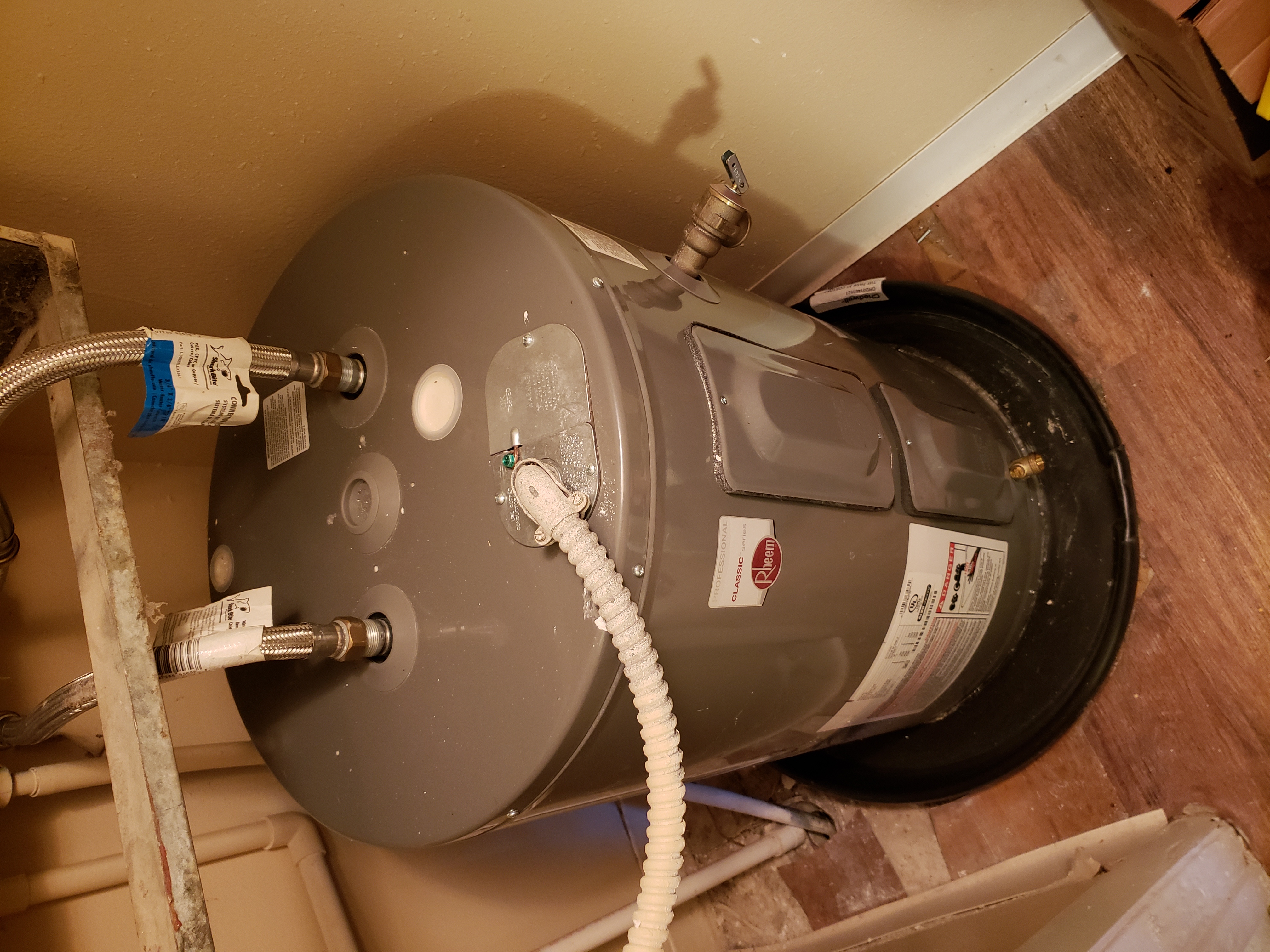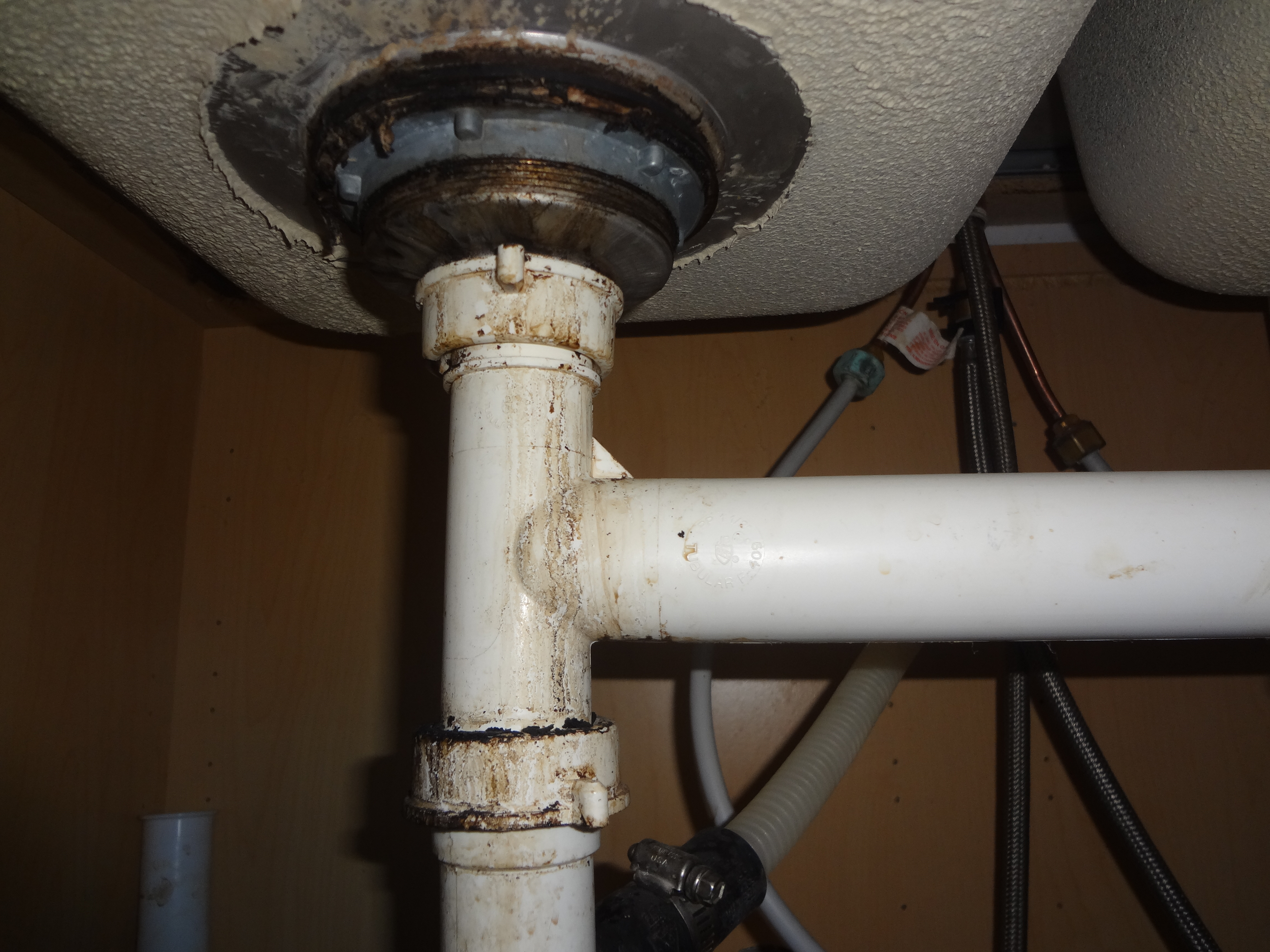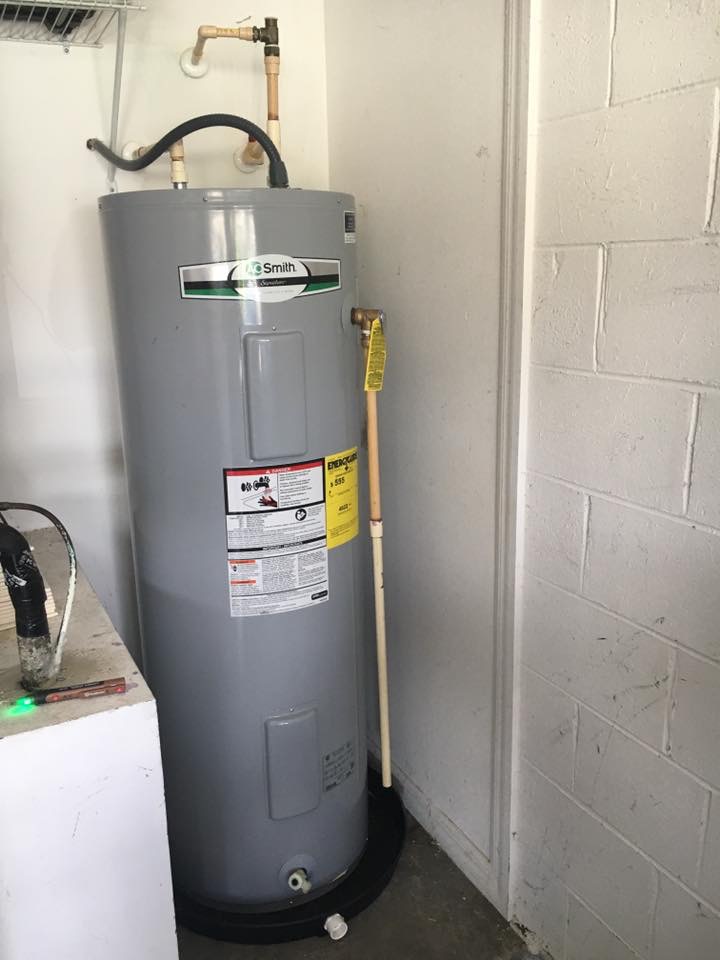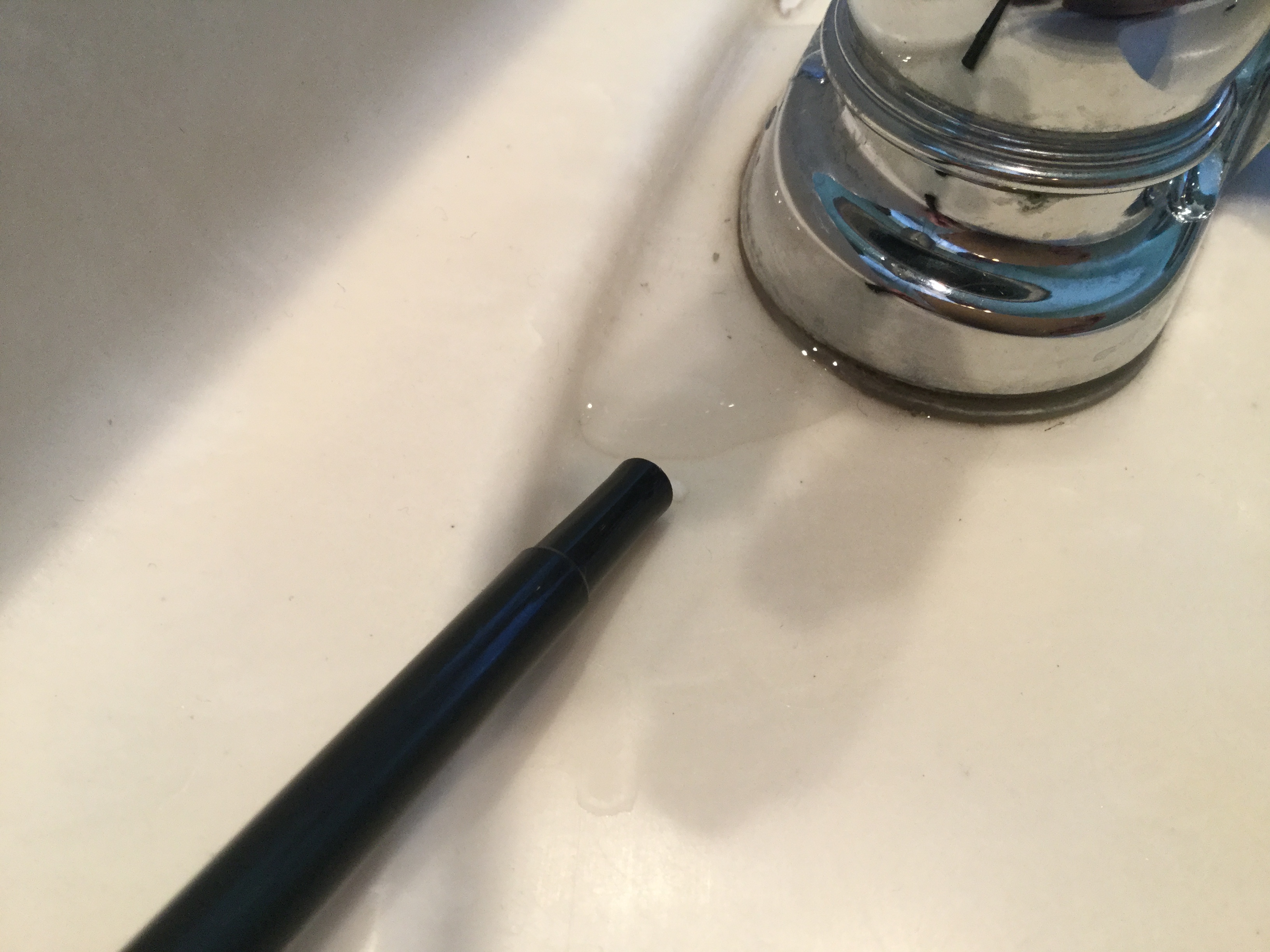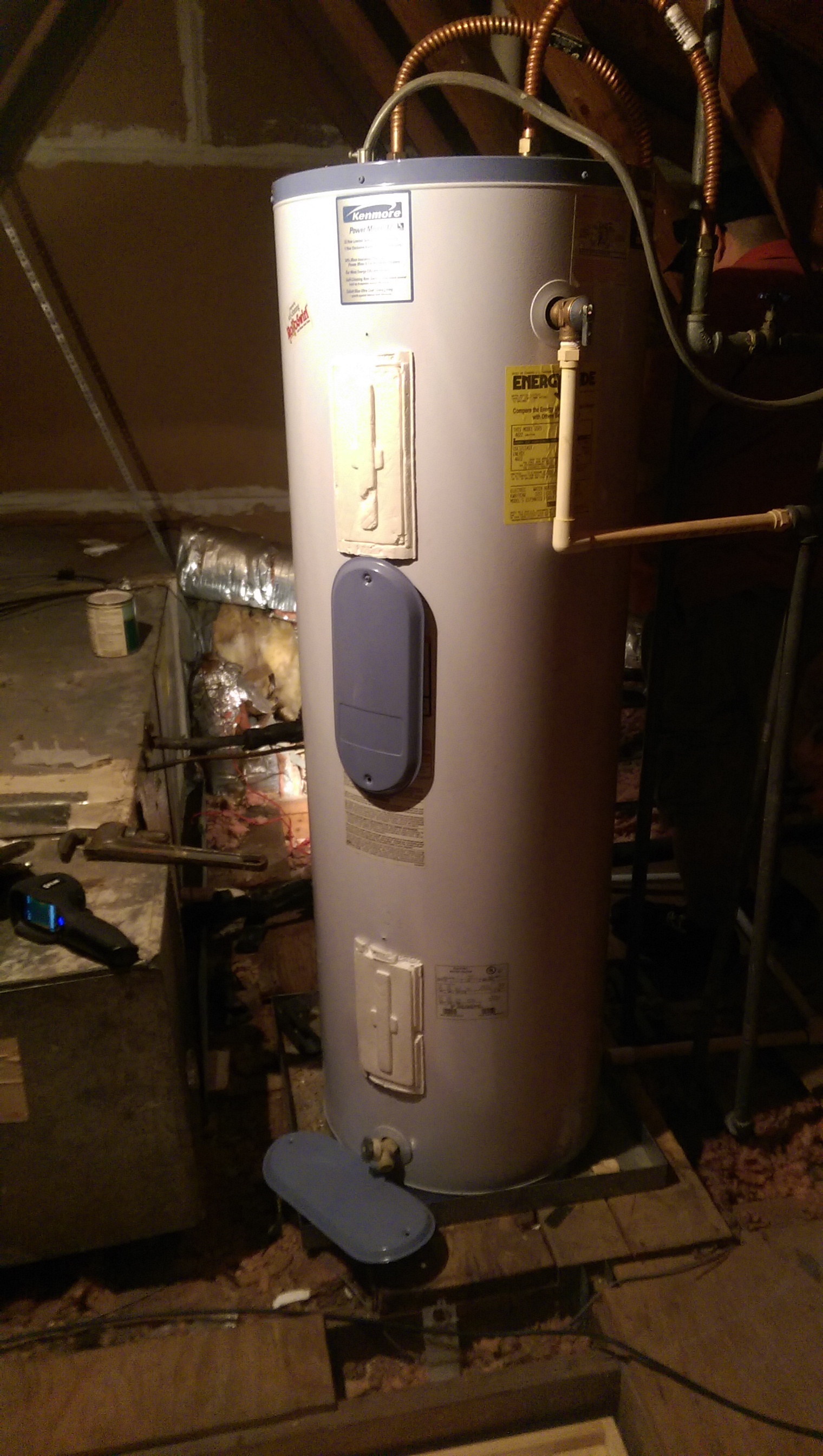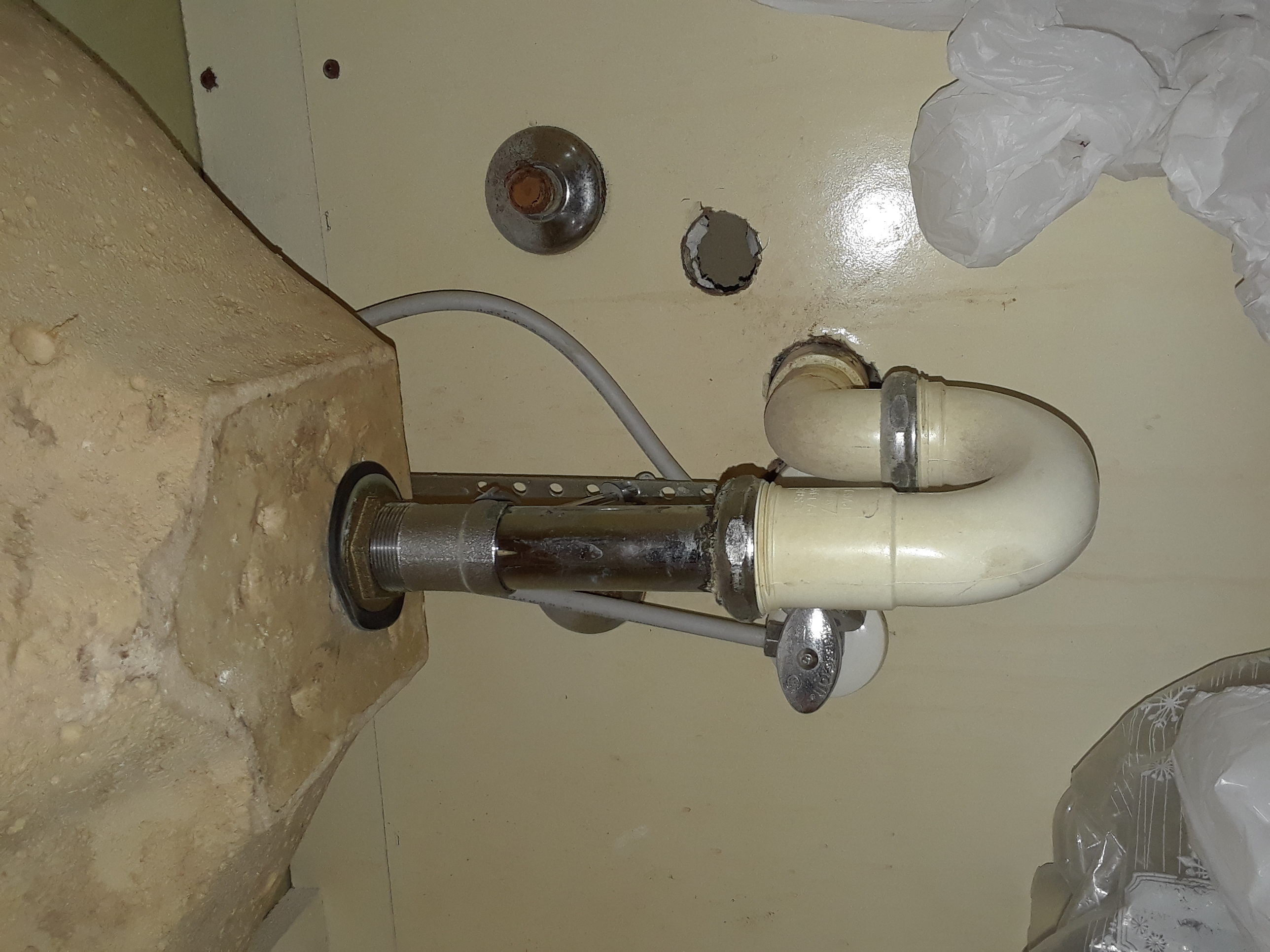While it’s not required in the internachi standards of practice to inspect any wells that you come across on a property, there are a few things that are handy to know if a client is curious. There are generally two categories of ell depth. Unsurprisingly they are: shallow and deep. A well should have a concrete casting that ends at a minimum of 12" above ground. In addition, there should be an access panel at the termination f the well casting. The cover and access hatch should be two to three feet in diameter.
This is a picture of a standard bathroom vanity with a two handle faucet.Showing the plumbing connections and shut off valves and hot and cold supply being correct cold water on the right and hot water being on the left.Also noticed no water leaks or damage to the cabinet.
This is a picture of an electric water heater. It has a tpr valve installed also has a catch pan which is made of plastic. All the required lables are present. There is no visible damage,rust or water marks. All access panels are securly in place.
Sump pumps are self activated electrical pumps that protects homes from moisture intrusion. They are typically installed below the basement or crawlspace floor. The pump usually sits in or next to a pit that is dug at the lowest end of the basement floor.
The left side tail piece for the kitchen sink shows signs of previous leaks. When the sink was filled with water, there was no signs of the leak still being a issue, would recommend to continue to monitor for potential leaks. There was no damage to cabinet observed from the prior leak.
A P-trap is the only trap permitted for use under sinks, this trap is recognizable by the P shape that it makes. This P-trap should hold a trap seal or water seal of 4 inches, this prevents bad gases and odors from coming back up into the room.
The water heater is a 50 gallon. The water heater have been replace recently. The water heater have a drain pan. The pipe connection is CPVC. The water heater does not have any signs of leak. The water heater is working perfectly.
P-traps are very important in drain system. They prevent odors to come up. They need to be install correctly due to they can leak and if the P-Trap is empty will allow odors to come thru. The p-trap is the most commonly use trap.
Bolts are usually either solid brass or brass-plated steel because brass is more resistant to corrosion from urine and chlorine than nearly any other common metal. Stainless steel might have been suitable, but stainless fasteners are highly prone to galling.

Bolts are usually either solid brass or brass-plated steel because brass is more resistant to corrosion from urine and chlorine than nearly any other common metal. Stainless steel might have been suitable, but stainless fasteners are highly prone to galling.
My essay is about residential hot water heater.Water heating is a heat transfer process that uses an energy source to heat water above its initial temperature. Typical domestic uses of hot water include cooking, cleaning, bathing, and space heating. In industry, hot water and water heated to steam have many uses.Water heaters can also be dangerous if not properly maintenance. a bad relief can blow the water heater up.

Ground Faults Protection A ground-fault circuit interrupter (GFCI) works by comparing the amount of current going to and returning from equipment along the circuit conductors. When the amount going differs from the amount returning by approximately 5 milliamps, the GFCI interrupts the current within as little as 1/40 of a second. Note: A GFCI will not protect you from line contact hazards (i.e. a person holding two “hot” wires, a hot and a neutral wire in each hand, or contacting an overhead power line). However, it protects against the most common form of electrical shock hazard, the ground-fault. It also protects against fires, overheating, and destruction of wire insulation.
Crawlspace Observations
FYI: Vapor barriers are important because the barrier limits the amount of moisture than can evaporate out of the soil into the
crawlspace. High humidity can result in mold and rot that lead to infestation by wood-destroying insects and eventually structural
damage. You should have a qualified contractor determine if additional soil or sand will be needed prior to installation.
Some of the cove molding is separating in the kitchen ceiling. This trim separation is located around the brick columns on either side of the kitchen Cooktop.and There is also some separation between the wall and the brick column.thank you
Here we have a faucet that has a steady stream of water flowing out from underneath the lever cap while the water is turned on. The water is leaking out on the left side (hot water). This is in need of repair and should be evaluated and serviced by a licensed professional.
This water heater was Electric , Contained a few problems Drain pan did not connect to anything so if pan were to fill with water ,it would leak. TPR was Stuck ,Not Functional, Rusting out on Bottom of Unit. This unit will need to be evaluated for replacement.
In this photo you can see a P-Trap in an older home. After running the water there were no signs of any leaking but the coupling nut did show signs of corrosion. The tailpiece was made out of brass with chrome nickel plating. In the photo you can also see the abandoned plumbing from when the home was repiped to PVC and CPVC.
checking in for another round
Vent Stacks , Pipe Jacks is my topic People often overlook the importance of caulking and sealing properly, Neglecting this simple step could be extremely damaging to Attic and interior , Proper installation is inspected along with proper caulking and sealing to ensure no leaking occurs
Ceiling fans are used to provide comfort to the occupants of that building. One of the issues a ceiling fan may have is that the fan may break free from the mount. The mount and electrical junction box should be rated for ceiling fan use. The fan may wobble due to the fan blades being misaligned.

